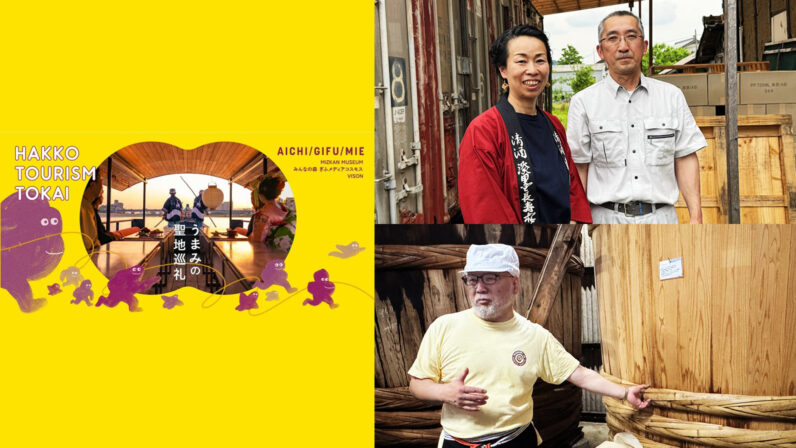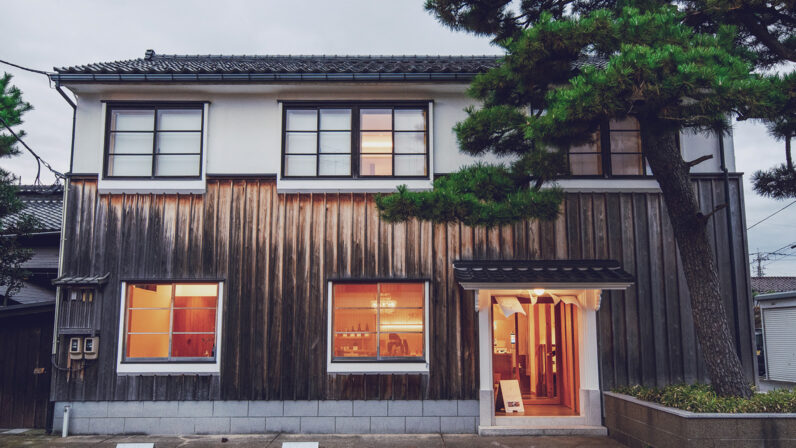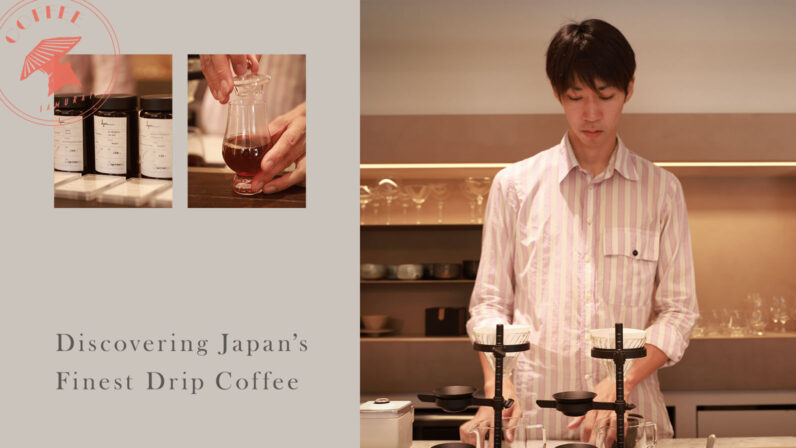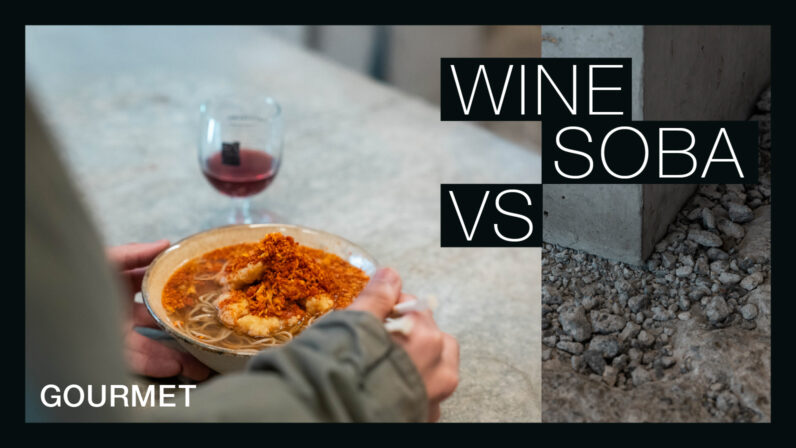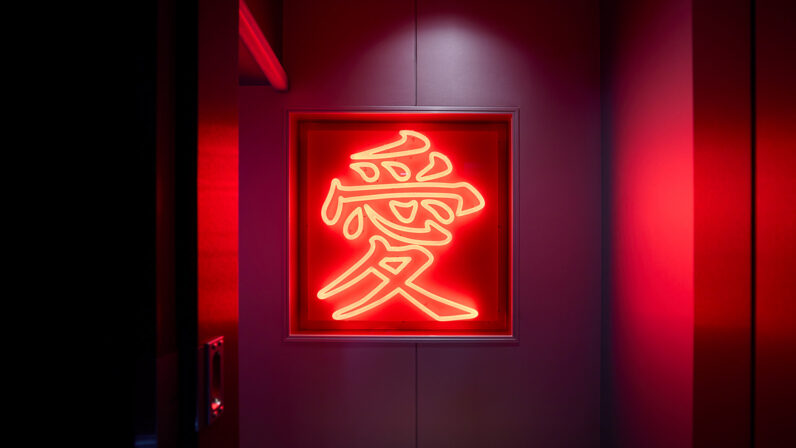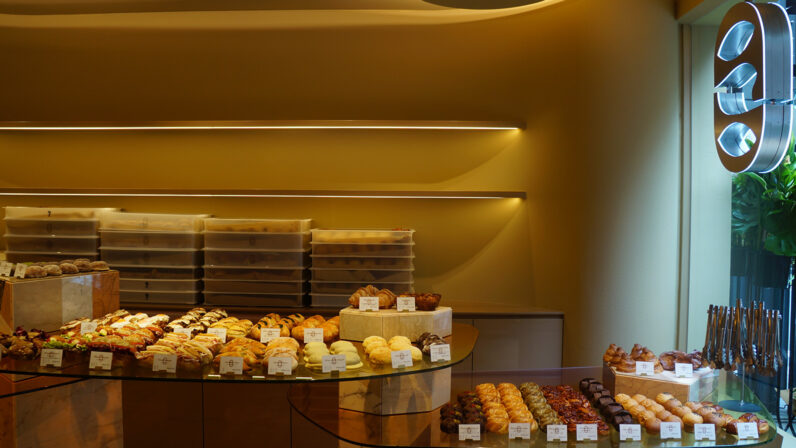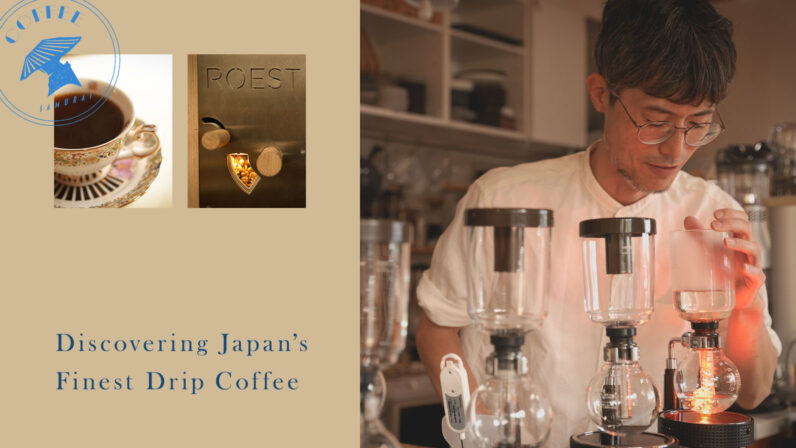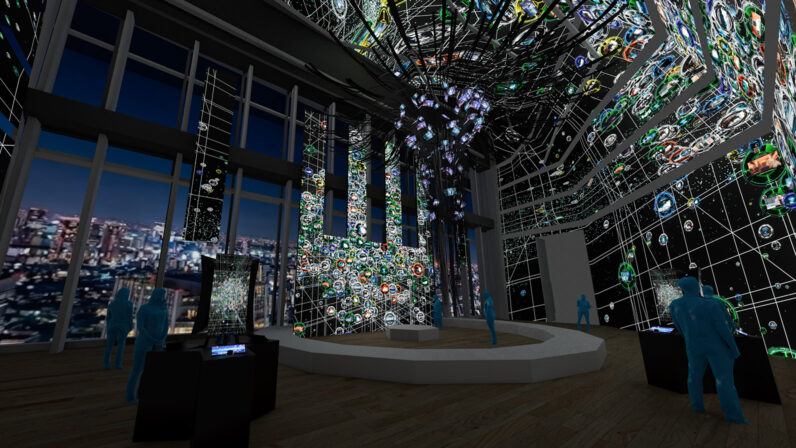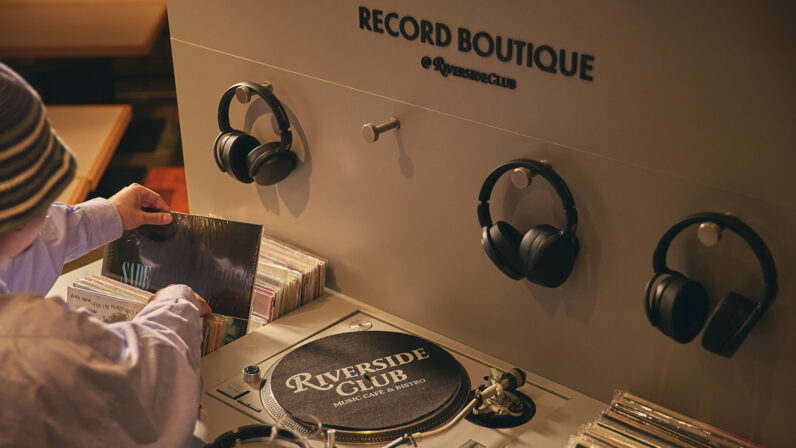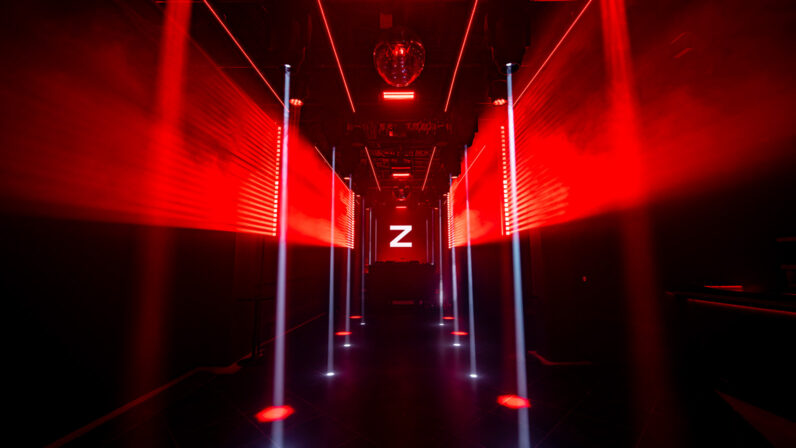The small but unmistakable silhouette of Mount Fuji on the horizon gradually looms larger as my train rolls out of Tokyo and into the peaceful countryside of Kanagawa.
The Odakyu Romancecar ‘Mount Fuji’ service from Shinjuku Station will arrive at my destination in a little over an hour. I gaze excitedly from the train’s panoramic windows, taking in the spectacular view of the grand mountain ranges of Tanzawa and Hakone stretching out in the distance. Although other local trains stop at Shin-Matsuda Station, which is closer to where I want to go, I strongly recommend taking this limited express train for the sheer magic of the journey.

Today, I’m on a cultural excursion, visiting a sake brewery. However, this is not your average sake brewery. When I arrive at Matsuda Station, I spot a large sign that reads ‘Nakazawa Shuzo Co., Ltd.’, which is when I realize: the sake brewery is located directly in front of the station. I’d heard of station police boxes and even station-side cafes, but I’d never come across a sake brewery right in front of a station. That is, until now.

I step off the train, taking my first steps in Matsuda-cho, Ashigarakami-gun – a tranquil town in the west of Kanagawa Prefecture. It’s a short four- or five-minute walk to the brewery – just the right amount of time to take in my surroundings and settle into the sleepy vibe of the town.


This town is the meeting point of two rivers: the Sakawa River, which flows down from Mount Fuji and the Tanazawa mountains, and its tributary, the Kawaoto River. A snow-capped Mount Fuji rises up on the western horizon, like a classic Japanese artwork.
It’s not surprising, then, that the Sakawa River was captured in the famous painting, ‘Odawara (Sakawa watashi),’ the tenth in the ‘Fifty-three Stations on the Tokaido’ ukiyo-e woodblock print series by Hiroshige Utagawa. This work depicts Odawara Castle and the Hakone mountain range on the other side of the river, so it’s assumed to be slightly further downstream from this location, but perhaps the artist visited this area for a preliminary inspection.
As I walk alongside the old wooden walls towards the entrance of the brewery, I imagine Utagawa working on that composition while sitting at the inn, drinking local sake and admiring the dawn and dusk scenery.
In the brewery’s garden, large carp streamers are ‘swimming’ leisurely in the April sky.


Founded in 1875, Nakazawa Shuzo is one of the oldest sake breweries in Kanagawa, celebrating its 200th anniversary in 2024. The elegant brewery entrance is often used as a location for filming commercials.

I’m greeted by Mr. Ryo Kagiwada, the 11th head of the brewery, who agreed to personally show me around the premises.
The latest brewing season has just ended and the brewers are taking a well-deserved break. In sake brewing terminology, the end of the brewing season is called koshiki-daoshi, which directly translates as “the overturning of the rice-steaming vat”. The name comes from the fact that the huge tub-shaped vats that are used for steaming rice during the brewing process must be tipped over so they can be washed when the season ends.
The brewery is quiet, but still filled with the slight lingering aroma of fresh unrefined sake. This smell floods the brewery during the peak of the brewing season. Some people describe it as being similar to that of melon or pear: sweet, fragrant, and pleasant. In many cases, this aroma has led those who dislike the smell of sake to fall in love with the drink.
The brewery and the main building are vintage wooden structures built in the Taisho era (1912 – 1926). Inside lies the huge vessel for steaming rice, the filtration machine, and the age-old tanks. From the faded wooden eaves to the visible electrical wiring and texturized plaster and concrete walls, the building has aged gracefully, reflecting its many years of service.

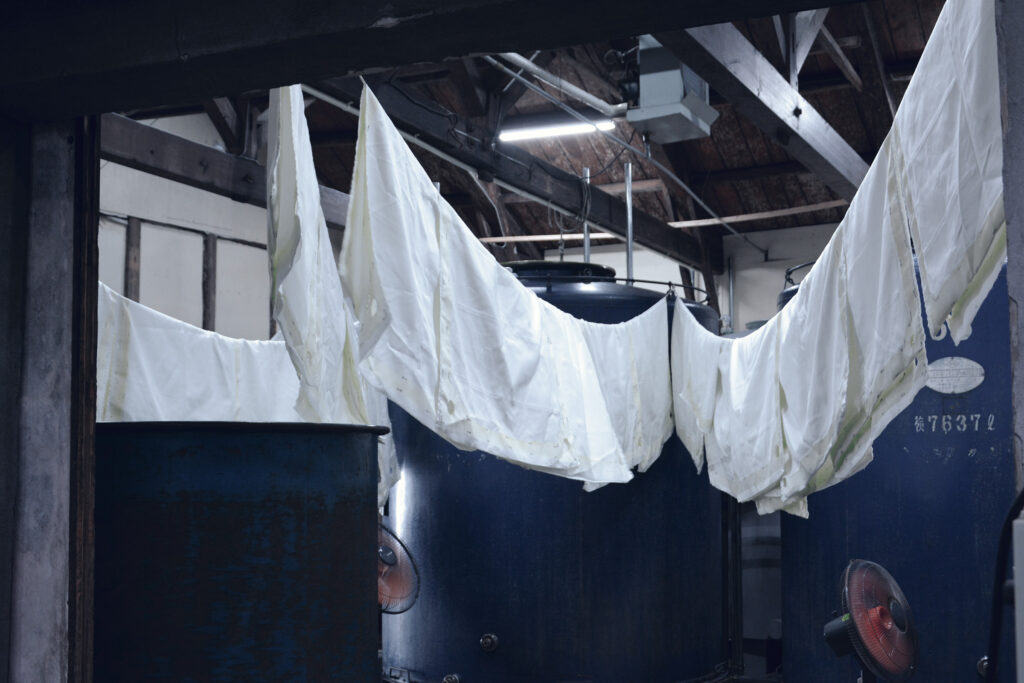
Several commercial fans spin in the dimly lit space where the storage tanks are located. White cloths, used in the rice steaming process, blow gently in the ensuing breeze. I had expected the cloths to be replaced each season, but Mr. Kagiwada tells me that they have been used repeatedly for the past three years. Following a special drying method – which involves drying the cloths in the shade so the edges don’t deteriorate as a result of exposure to sunlight – for a certain number of days, ensures the cloths can be reused the following season. Numerous rigid practices like these are repeated unchanged during the sake brewing process, with a few minor changes each year.
Many of the seemingly basic practices of the brewers, such as washing rice, caring for tools, pressing sake, and washing bottles, are actually an amalgamation of skills based on their various experiences. By seeing the cloths carefully hung out to dry as part of the laborious brewing process, I feel like I caught a glimpse of their wisdom, craftsmanship and respect for their art.
In vast contrast to the bright carp streamers swimming in the wind in the sunlit garden, the plain white cloths flutter slightly as they wait silently at the back of the brewery for the next winter brewing season to begin. Mr. Kagiwada guides me through the rice washing and steaming area. Next is the koji room, the brewing tanks, filtration machine, and storage room. We walk through the brewery, following the entire brewing process from start to finish – from washing rice right up to bottling.
For the first-time visitor, there will be a series of surprises and discoveries. For example, this circular metal contraption is a sake filtration machine. The small wooden hut-like space is called a koji room, and is found in every sake brewery. It is usually off-limits because of the delicate koji mold that is used inside. Then there are the giant sake tanks that look like you could swim in them standing up, with the dates of months and years long gone by written on the sides in intricate Japanese.

Considering that a single experience enhances ‘perceived value’ throughout the rest of one’s life, witnessing a country’s culture up close and personal is a very meaningful thing. Just like a visit to a dried bonito flakes factory may inspire a new appreciation for dashi soup stock, and a visit to a pottery studio will make your handmade plates and cups suddenly seem much more special, seeing and learning about a sake brewery and its story firsthand provides a whole new perspective that will make you savor your next cup of sake that little bit more.
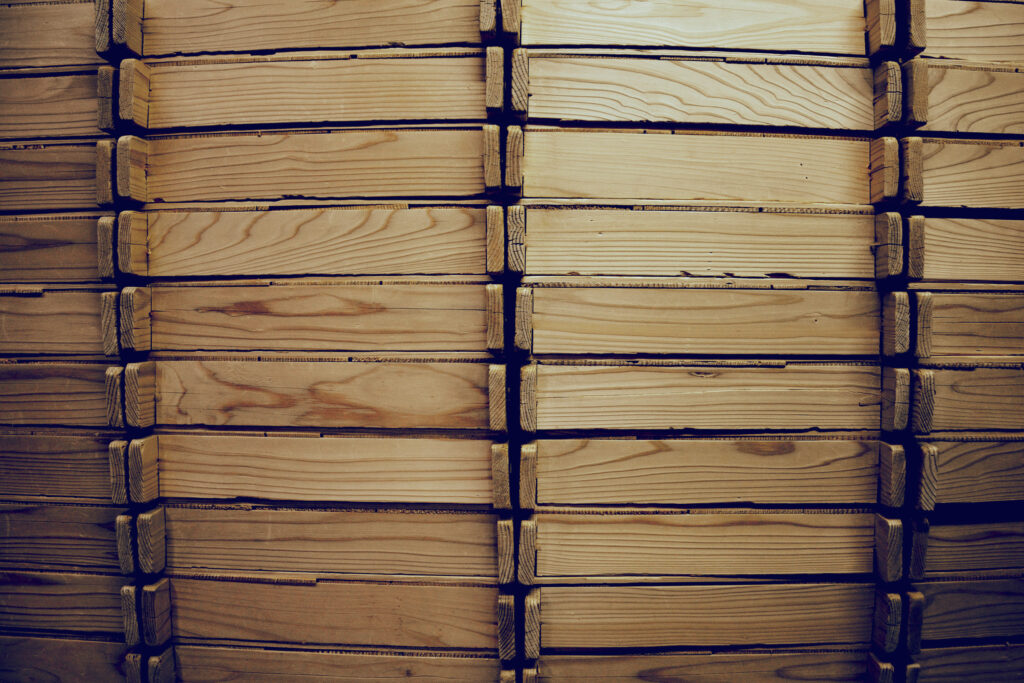
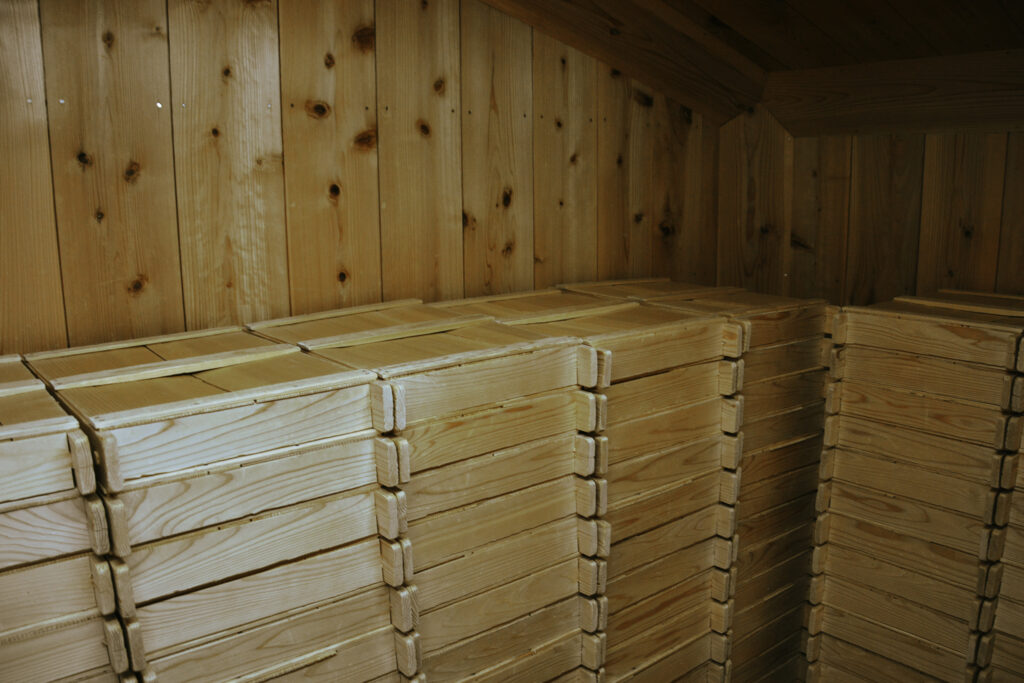
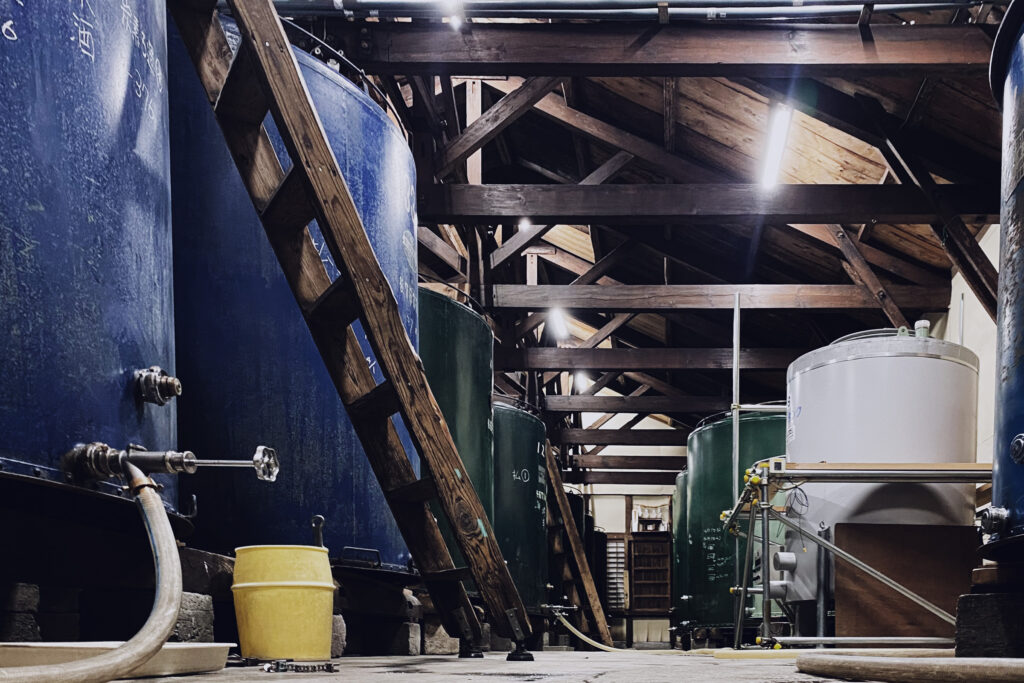
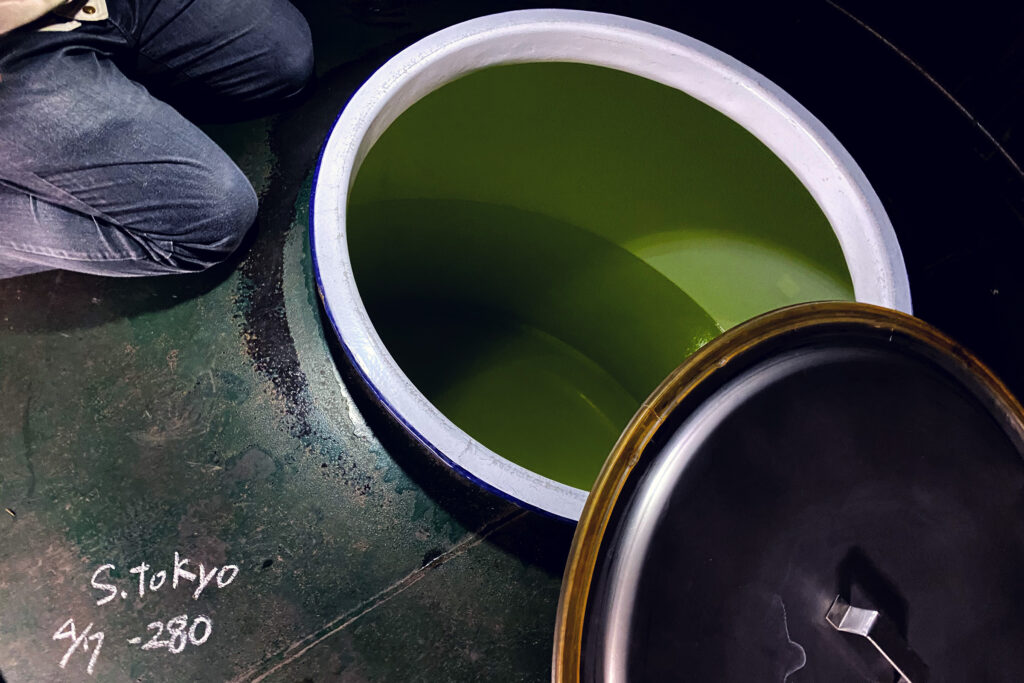
After the brewery tour, I wander over to the sales office and tasting corner across the narrow road from the main building. This is the place where visitors can sample Nakazawa’s sake to their heart’s content. A server offers six different types of sake for 100 yen each. How wonderful to be able to sample sake at your own pace for just one coin! There’s every grade from honjōzō to daiginjo. ‘Kotohime’ is a standard junmai sake brewed with ‘Wakamizu’ – a type of locally grown sake-specific rice from the brewery’s own rice fields. ‘Ryo’ is brewed with ‘Kawazu-zakura yeast’ that Ryo Kagiwada himself collected from Kawazu-zakura cherry trees that bloom across the street from the brewery. Other varieties, such as nama-sake (unpasteurized sake), change depending on the season, so be sure to sample the current seasonal sake.
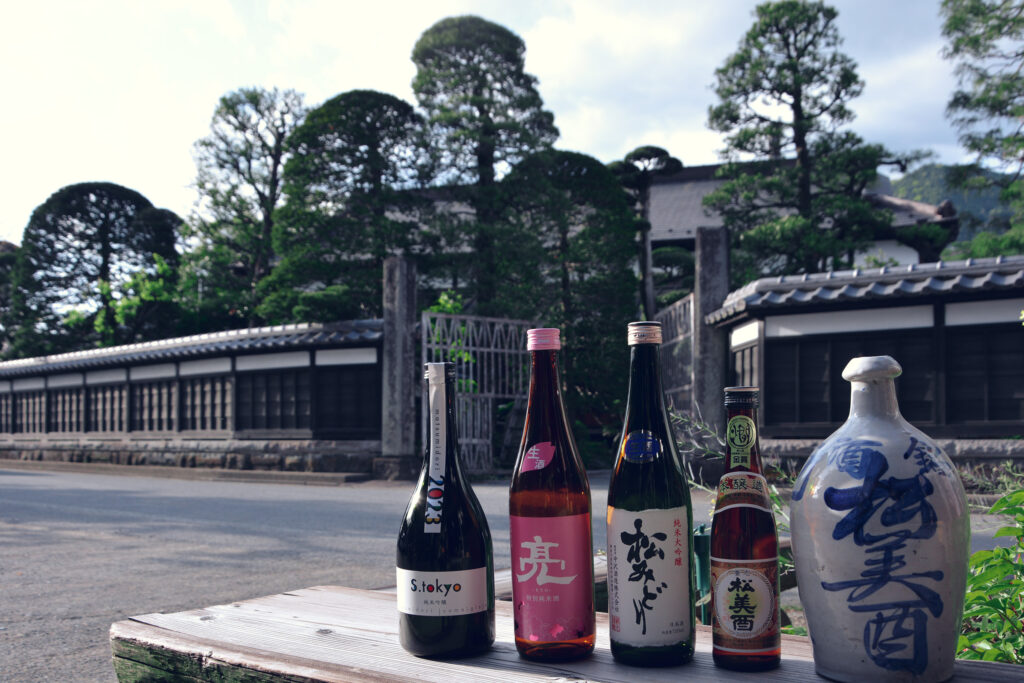
You will notice here that there are two types of labels: “Matsumidori” written in kanji (Chinese characters), and the same written in hiragana. The former was brewed by Ryo Kagiwada’s father, Shigeru while the latter was brewed by Ryo himself. Both are delicious. Despite being so closely related, the father and son come from different generations and have very different tastes in sake. It is certainly interesting to compare the different directions they chose for their respective brews.
After tasting a selection of delicious sake and finding your favorite, I’d like to recommend a Matsuda area souvenir that goes perfectly with sake.
Introducing: smoked cherry trout.
This delectable delicacy is certified as Matsuda’s representative dish, and it’s especially delicious paired with any of the brewery’s varieties of sake. It makes perfect sense that fish and rice cultivated in the same water source complement each other perfectly, but I particularly recommend the ‘Ryo’ brand made with Kawazu-zakura yeast.
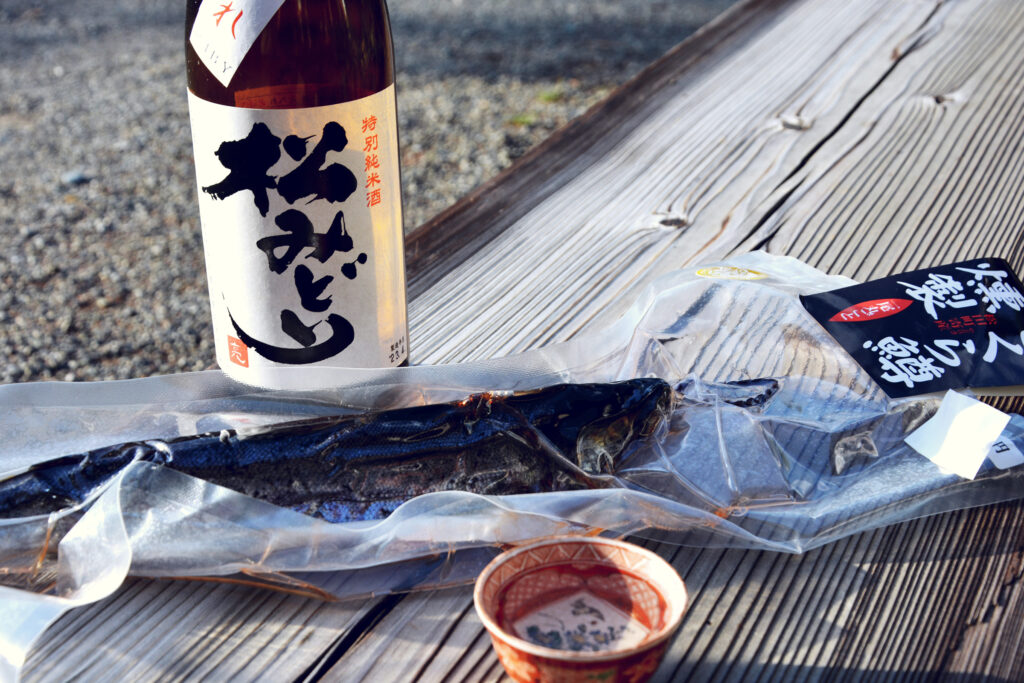
If you’d like to taste sake at a local restaurant after visiting the brewery, just take a short trip over to the port town of Odawara.
Nakazawa Shuzo has a history of serving sake at Odawara Castle during the Edo period (1603 – 1867). It’s inevitable that the sake brewed especially for this port town – one of the most prominent in Kanagawa Prefecture – would go well with the seafood. This time, I visit ‘Saishutei Holla’, a restaurant recommended to me by Mr. Kagiwada.
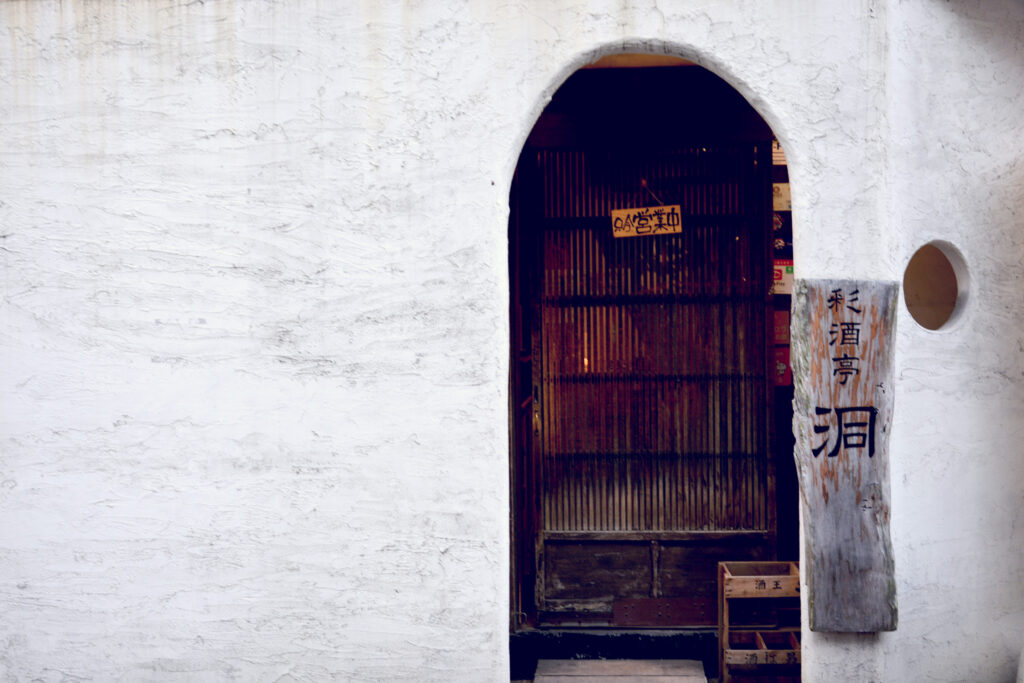
Odawara is famous for its kamaboko fish cakes. When you order itawasa (kamaboko with wasabi and soy sauce) in this town, it’s usually served with wasabi-zuke (pickled wasabi). This is real soul food that has been enjoyed in Odawara for generations thanks to its proximity to Izu, a famous wasabi-producing area. The main ingredients of pickled wasabi are Japanese horseradish and sake lees. Served on top of the itawasa made from refined fish paste, it’s an ideal match with sake.
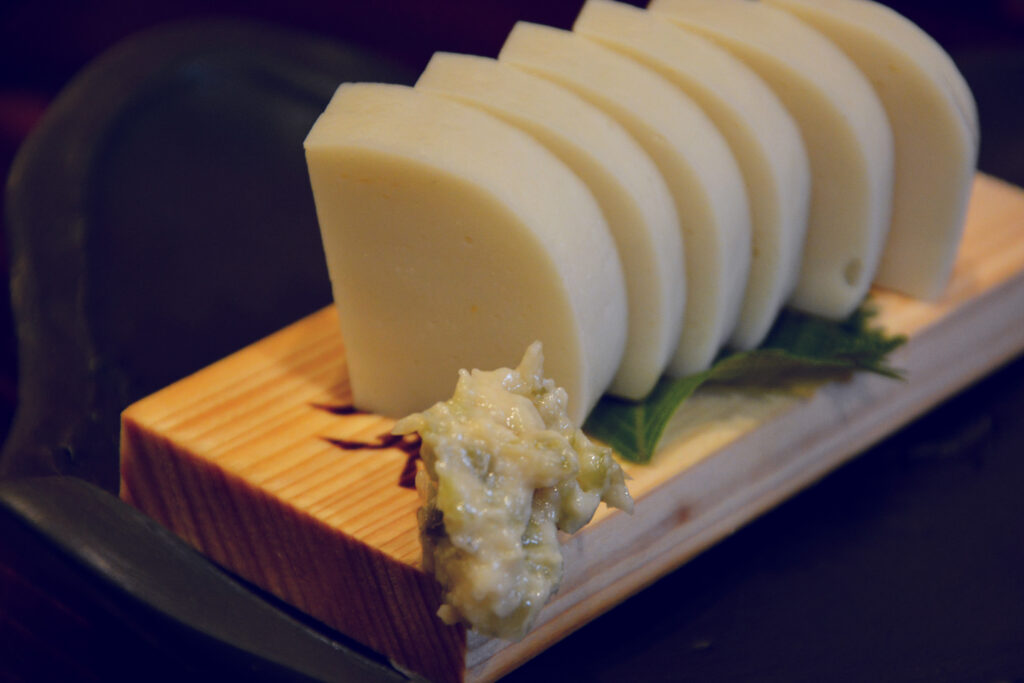
The restaurant also offers fresh fish caught on the same morning from Odawara and Hayakawa, so be sure to try this as well. White fish such as greater amberjack and gurnard, both locally caught, go well with full-bodied junmai sake which exemplifies the Matsumidori brand. Fresh sashimi-grade horse mackerel is served fried, which is one of the luxuries of the area stretching from Shonan to Izu. Warm sake also goes well with this dish.
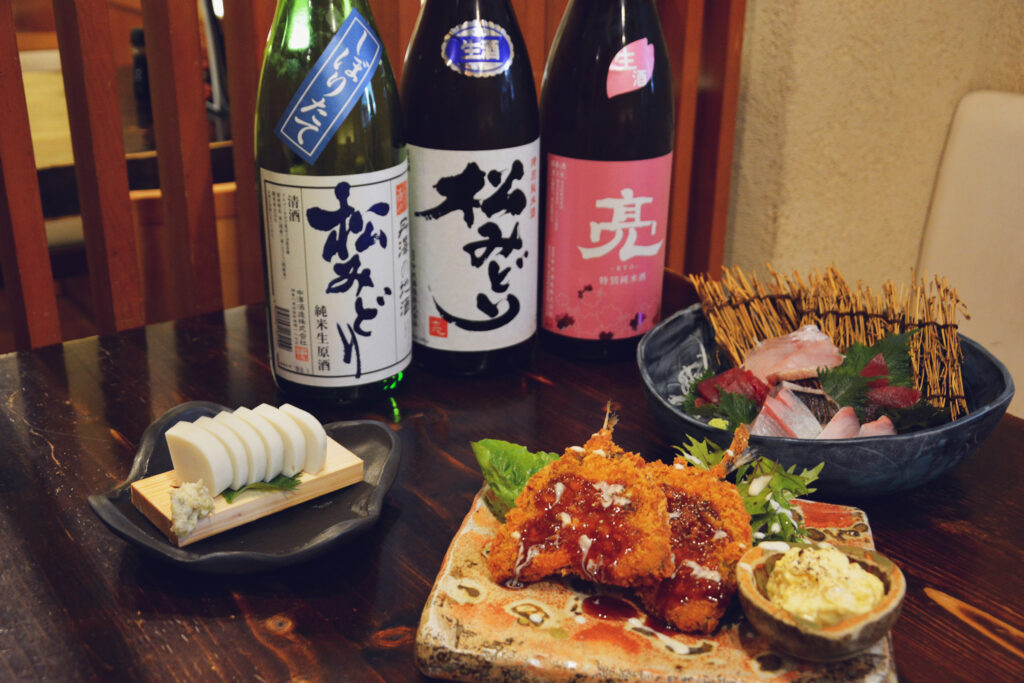
From Odawara Station, I can choose to return to Tokyo on the Odakyu Romancecar, the Green Car on the Shonan Shinjuku Line, or even the Shinkansen while reveling in the afterglow of my trip.
Most people are under the impression that sake breweries are located far from big cities such as Tokyo in Niigata, Tohoku and other faraway prefectures, but in fact, there are 14 breweries in Kanagawa and 10 in Tokyo. With 34 in Saitama, 38 in Chiba, 35 in Ibaraki, and 29 in Tochigi, there are plenty of other famous breweries in the Greater Tokyo Area and neighboring prefectures alone.
You can visit on a weekend day trip or stay overnight and enjoy walking around the town, tasting local products and sake. Try my cultural excursion for yourself and enjoy immersing yourself in the world of sake. I hope you’ll join me on my next brewery visit!
Nakazawa Shuzo
Address: 1875 Matsuda Soryo, Matsuda-cho, Ashigarakami-gun, Kanagawa 258-0003, Japan
Tel: 0465-82-0024
Open for tours: May-October, every Saturday
Fee: 1,000 yen per person (with 500-yen shopping coupon)
Capacity: 10 people
Weekday tours are also available for overseas visitors who are only in Japan for a short time. English-speaking staff available.
Website: https://www.matsumidori.jp/
*For further details, please check the Nakazawa Shuzo website.
Matsuda Town Website - Smoked Cherry Trout
https://town.matsuda.kanagawa.jp/site/kankou-sub/sakuramasunokunsei.htmlShop: Cosmos-Kan Produce Store
https://town.matsuda.kanagawa.jp/site/kankou-sub/cosmos-kan.html
Restaurant ‘Saishutei Holla’
https://www.instagram.com/holla005/?hl=ja

